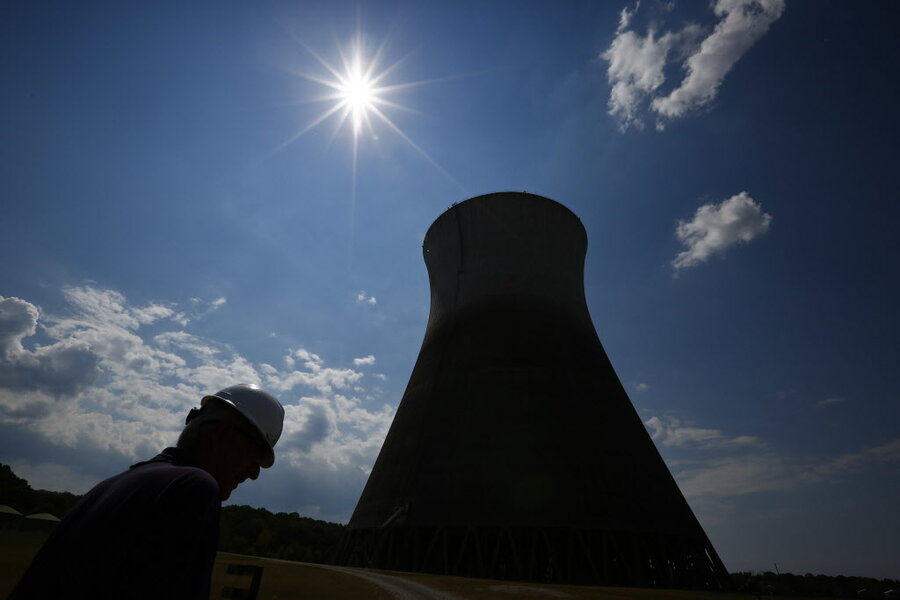After 20 years of nuclear dormancy, a new reactor emerges in the US
Loading...
In many American cities, nuclear power plants are rapidly shutting down. But in others, they’re just now popping up.
After more than four decades of intermittent construction, a new reactor has begun commercial operation in Tennessee. Watts Bar Unit 2, built and operated by the Tennessee Valley Authority (TVA), is the country’s 100th nuclear generator and the first new one in 20 years. The 1,150-megawatt generator, which was originally connected to the power grid in June, is now producing electricity for to 650,000 homes and businesses in Tennessee’s southeast corner.
The opening of a new nuclear power plant amid closures of existing plants is a reflection of the mixed views of nuclear energy in the United States. While opponents caution that nuclear power comes with risks of meltdown that cannot be ignored, to advocates – including some environmentalists – nuclear power represents a clean and inexpensive source of energy and a vital transitional fuel that can help the US move away from fossil fuels and achieve energy independence.
“Watts Bar Unit 2 is a key part of our commitment to produce cleaner energy without sacrificing the reliability and low cost that draws both industry and residents to our area,” said Bill Johnson, TVA president and CEO, in a press release.
Meanwhile, other states have chosen to shutter their aging nuclear generators. US energy companies retired four nuclear power plants between 2013 and 2014. Exelon Corp. has announced plans to decommission two Illinois plants by 2018.
And in June, California’s Pacific Gas & Electric Co. decided to close its Diablo Canyon facility – the last functioning reactor in the state.
“I think the stakes are becoming higher as these closures are happening,” Jesse Jenkins, a researcher at the Massachusetts Institute of Technology's Energy Initiative, told the Christian Science Monitor's Jessica Mendoza in June. “We have a pretty big decision to make as a country about whether or not we’re going to give up this source of power or to build on that foundation. That could be one of the biggest decisions we’ll have when it comes to our targets and climate goals.”
Under the Paris climate agreement, United Nations member nations will need to significantly limit greenhouse gas emissions. As low-carbon energy sources become increasingly critical, public discourse on nuclear has become increasingly polarized.
Ms. Mendoza reported:
Opponents of nuclear power point to the plants’ safety risks, the problem of their radioactive waste, and the fast-falling costs of cleaner alternatives… The other side says there’s still a key hurdle in deploying more solar arrays and wind turbines: They only provide power when the sun is shining or the wind blowing – unless it gets much cheaper to store that power to be used on demand.
But some say the nuclear shutdown is premature. Nuclear energy accounts for about 20 percent of electric power in the US. Renewables only produce 13 percent combined. Proponents of nuclear energy argue that solar arrays and wind turbines aren’t being built fast enough to replace decommissioned reactors.
“Nuclear power remains the only source of carbon-free energy that is available 24 hours a day, seven days a week,” said Joe Grimes, TVA executive vice president of generation and chief nuclear officer, in a press release.
Tennessee’s Watts Bar 2 is the first reactor to meet the Nuclear Regulatory Commission’s new safety standards, which were drafted after the Fukushima nuclear meltdown in 2011.








